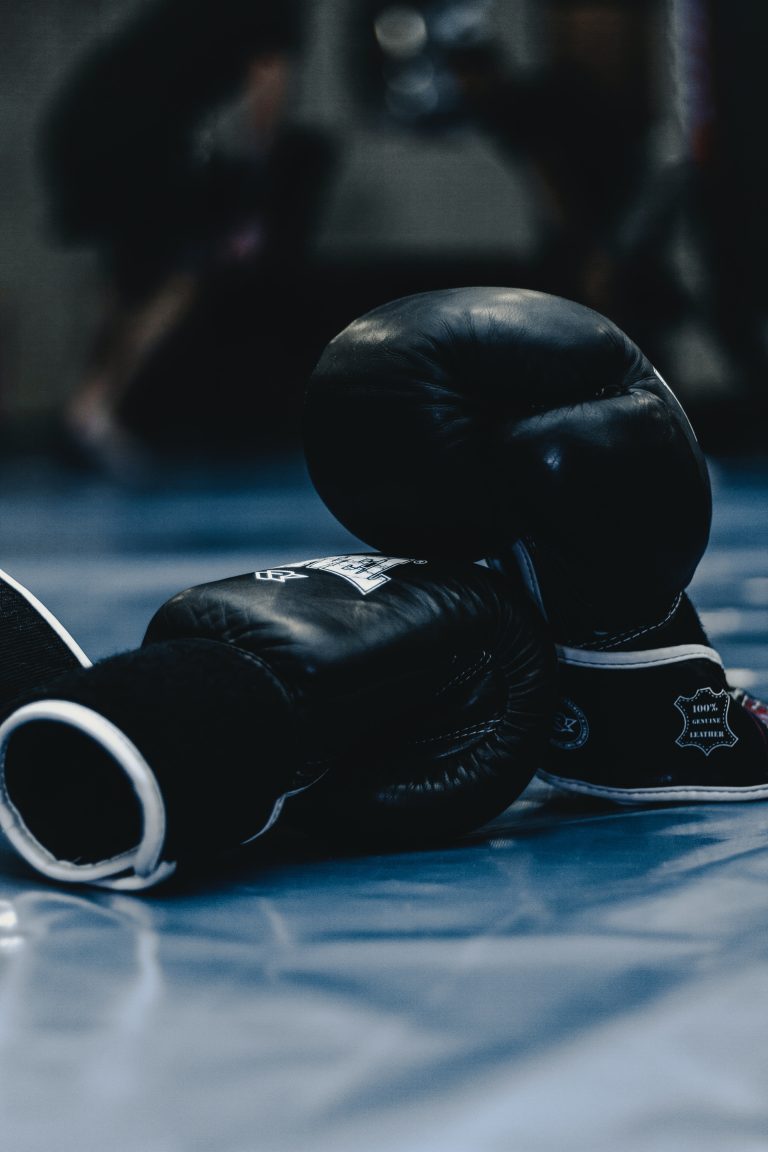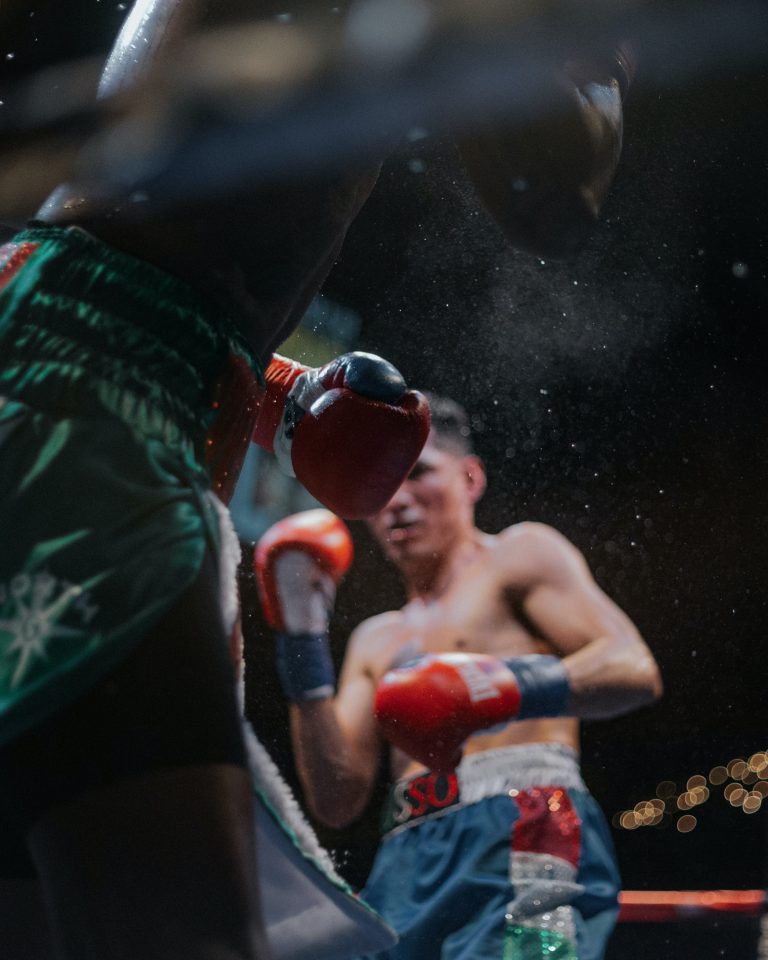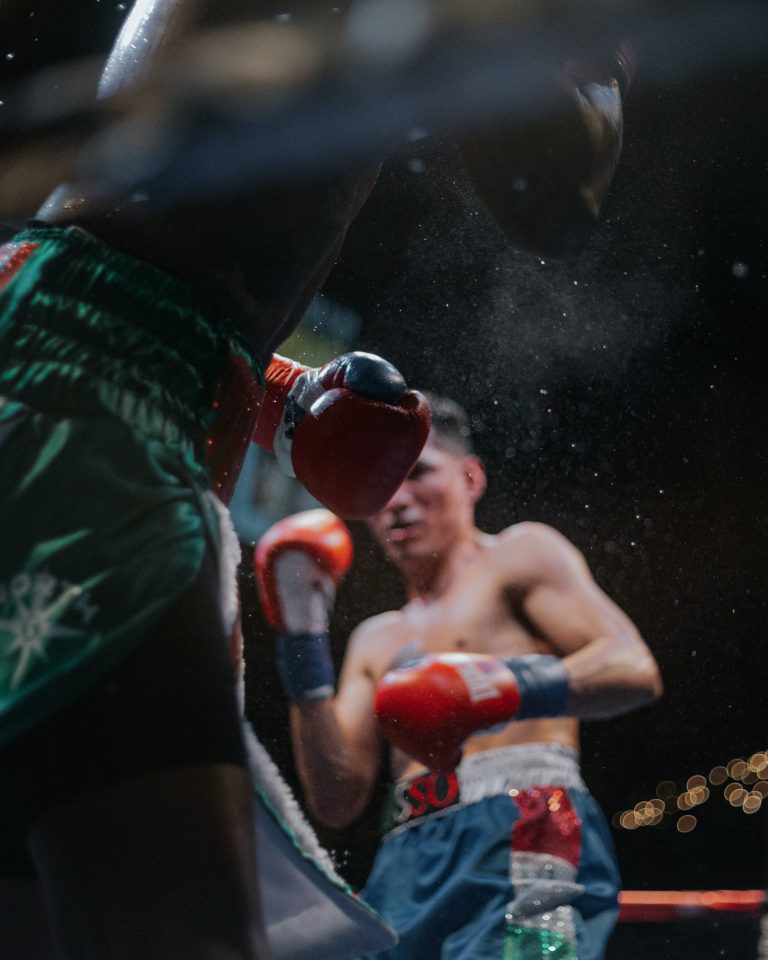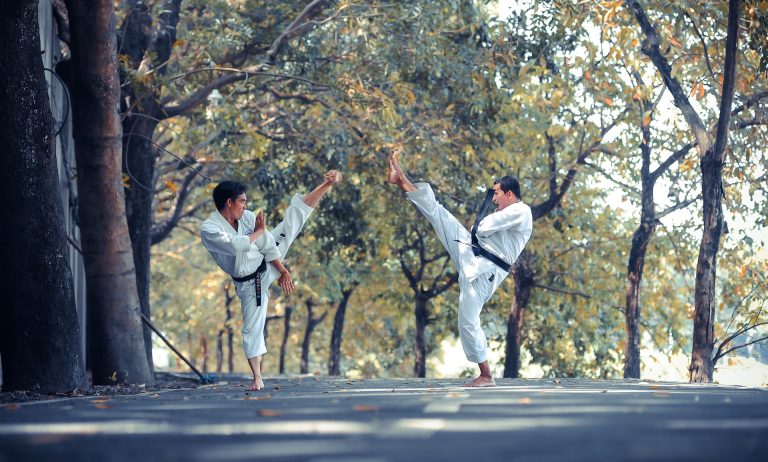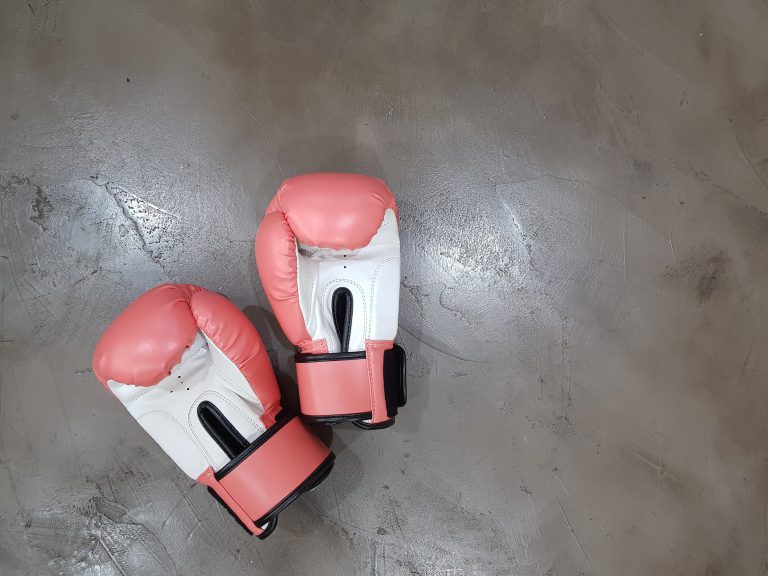Karate Gürtelanweisungen
Karate ist eine Kampfkunst mit japanischen Wurzeln, die sich auf die Entwicklung von Körper, Geist und Seele konzentriert. Ein wichtiger Teil des Karate-Training ist das Fortschrittssystem durch die verschiedenen Gürtelfarben. In diesem Beitrag werden die Schritte zum Erwerb des schwarzen Gürtels erläutert.
Weiße Gürtelfarbe (Anfänger)
Jeder Karateka beginnt seine Reise mit einem weißen Gürtel. Die erste Prüfung, um in die nächste Stufe zu gelangen, erfolgt normalerweise nach etwa drei bis sechs Monaten intensiven Trainings. Diese Prüfung ist in der Regel eine Demonstration von grundlegenden Techniken, die vom Trainer auferlegt werden. Wenn der Trainer zufrieden ist, wird der Schüler befördert und kann dann den nächsthöheren Gürtel tragen.
Gelbe Gürtelfarbe (8. Kyu)
Die zweite Stufe, die der Schüler erreichen kann, ist der gelbe Gürtel. In der Regel wird dieser Gürtel nach ungefähr acht Monaten Training erreicht. Der Schüler muss bei der Prüfung grundlegende Kampftechniken, Kombinationen von Techniken und einige Grundkata vorführen. Auch hier bestimmt der Trainer, ob der Schüler fortgeschritten genug ist, um zum nächsten Level zu gelangen.
Orangene Gürtelfarbe (7. Kyu)
Nach dem gelben Gürtel kommt die orange Stufe, die normalerweise nach einem Jahr Training erreicht wird. Der Schüler muss nun seine Techniken und Kampfkombinationen weiter perfektionieren und mehrere schwierigere Kata demonstrieren. Der Trainer entscheidet, wann der Schüler bereit ist, zum nächsten Level zu gelangen.
Grüne Gürtelfarbe (6. Kyu)
Die nächste Stufe ist der grüne Gürtel, der normalerweise nach 1,5 bis 2 Jahren Training erreicht wird. Der Schüler muss nun Techniken, Kombinationen, Kata und Selbstverteidigungstechniken demonstrieren. Die Prüfung wird anspruchsvoller, da der Schüler nun ein höheres Niveau erreicht.
Blaue Gürtelfarbe (5. Kyu) und Brauner Gürtel (3. und 4. Kyu)
Nach dem grünen Gürtel kommen die Stufen Blau und Braun, die normalerweise die längste Zeit in Anspruch nehmen. Der Schüler muss nun anspruchsvolle Techniken, Kombinationen, Kata und Kumite-Taktiken demonstrieren. Die Anforderungen variieren je nach Karate-Stil und Trainer. Die Prüfung erfolgt normalerweise jedes Jahr.
Schwarzer Gürtel (1. Dan)
Der schwarze Gürtel, auch bekannt als 1. Dan, ist das ultimative Ziel, das jeder Karateka anstrebt. Je nach Training und Fortschritt des Schülers kann es zwischen 5 und 10 Jahren dauern, um den schwarzen Gürtel zu erreichen. Der Schüler muss nun alle Aspekte des Karate-Kampfes, einschließlich Techniken, Kata, Selbstverteidigung und Kumite-Taktiken, perfektionieren. Die Prüfung ist äußerst anspruchsvoll und besteht normalerweise aus einem mehrstündigen Test, der von hohen Karate-Meistern durchgeführt wird.
Zusammenfassung
Die Entwicklung von einem weißen Gürtel bis zum schwarzen Gürtel erfordert Engagement, Durchhaltevermögen und harte Arbeit. Die verschiedenen Gürtelstufen dienen dazu, den Fortschritt des Schülers zu messen und ihm Feedback über seine Leistungen zu geben. Es ist wichtig, sich daran zu erinnern, dass der Gürtel nur ein physisches Symbol des Fortschritts ist – das eigentliche Ziel des Karate ist die Entwicklung des Körpers, des Geistes und der Seele.
Karate Gürtelanweisungen – Answering the Most Frequently Asked Questions
Karate is a martial art that has been around for centuries. It requires discipline, focus, and hard work to achieve the highest levels of proficiency. One way to demonstrate this proficiency is through the use of the karate belt system. This system is based on the colors of the belts, with each color representing a different level of skill and experience. But what are the guidelines for getting these belts? What do the different colors mean? In this blog post, we will answer some of the most frequently asked questions about Karate Gürtelanweisungen.
1. What Are Karate Belts?
Karate belts are used to indicate a student’s level of proficiency in martial arts. Different colors represent various levels of knowledge, and the belt system is used as a way to motivate students to work harder and achieve higher levels of skill.
2. What Do the Different Colors of Belts Mean?
The colors of karate belts represent different levels of skill and knowledge. The most common colors are:
- White Belt – This represents a beginner level of knowledge and skill.
- Orange Belt – This represents an intermediate level of knowledge and skill.
- Green Belt – This represents a more advanced level of knowledge and skills.
- Black Belt – This represents a mastery of karate and is the highest level of achievement.
3. What Are the Requirements for Obtaining a Karate Belt?
Different karate schools may have slightly different requirements for obtaining a belt. However, in most cases, the requirements involve the student achieving a certain level of proficiency in their fighting techniques, kata (prearranged movements), and overall knowledge of the art. Students must also have a certain number of hours of training in order to qualify for a belt.
4. How Long Does It Take to Get a Karate Belt?
The time it takes to obtain a karate belt depends on several factors, including how often a student trains, how quickly they learn, and the requirements of their karate school. Generally, it takes several months to a year of consistent training and practice to obtain a new belt.
5. Can Someone Skip a Belt Level?
Skipping a belt level is not usually allowed by most karate schools. Each belt level represents a certain level of knowledge and skill that must be demonstrated before moving on to the next level. Skipping a level can lead to gaps in knowledge and skills, which can hinder a student’s progress in the long term.
6. What Happens During a Karate Belt Test?
A karate belt test is an evaluation of a student’s knowledge and skill. During the test, students will be asked to demonstrate their fighting techniques, kata, and overall understanding of the art. They may also be required to perform other tasks, such as board breaking or sparring. The specifics of the test will vary depending on the karate school and the belt level being tested.
7. What Should Someone Wear During a Karate Belt Test?
During a karate belt test, it is important to wear appropriate karate attire. This usually consists of a karate gi (uniform) and a belt that corresponds to the student’s current level. It is also important to make sure that the gi is clean and in good condition.
8. How Should Someone Prepare for a Karate Belt Test?
To prepare for a karate belt test, students should focus on consistent training and practice. They should also work on improving their techniques, kata, and overall understanding of the art. It is also a good idea to seek feedback and guidance from instructors and more advanced students in order to improve their skills.
9. What Happens After Someone Obtains a Karate Black Belt?
After obtaining a karate black belt, a student may continue to train and practice in order to refine their skills and knowledge. They may also be eligible to pursue higher levels of black belts, which require even more skill and knowledge. Additionally, experienced black belts may be asked to help instruct and guide other students in the art of karate.
10. What Are Some Benefits of Earning a Karate Belt?
Earning a karate belt can have many benefits beyond just the accomplishment of the physical goals. These belts can boost confidence and self-esteem, improve discipline and focus, and help students set and achieve goals. They can also establish a sense of community and camaraderie among karate students as they work together to achieve their goals.
Conclusion
Karate Gürtelanweisungen are an important part of martial arts training. They signify the levels of proficiency that students achieve as they advance in their training. Understanding the karate belt system and learning about the requirements and guidelines for obtaining these belts can help students stay motivated and work harder to reach their goals. By following the guidelines of their karate school and committing to consistent training and practice, students can achieve higher levels of skill and proficiency in the art of karate.
Inhaltsverzeichnis

